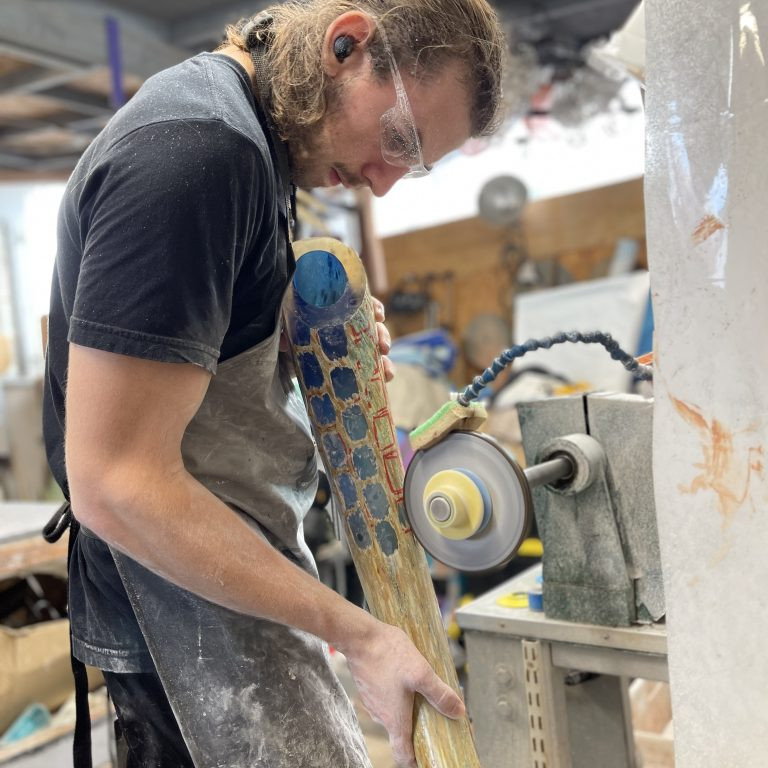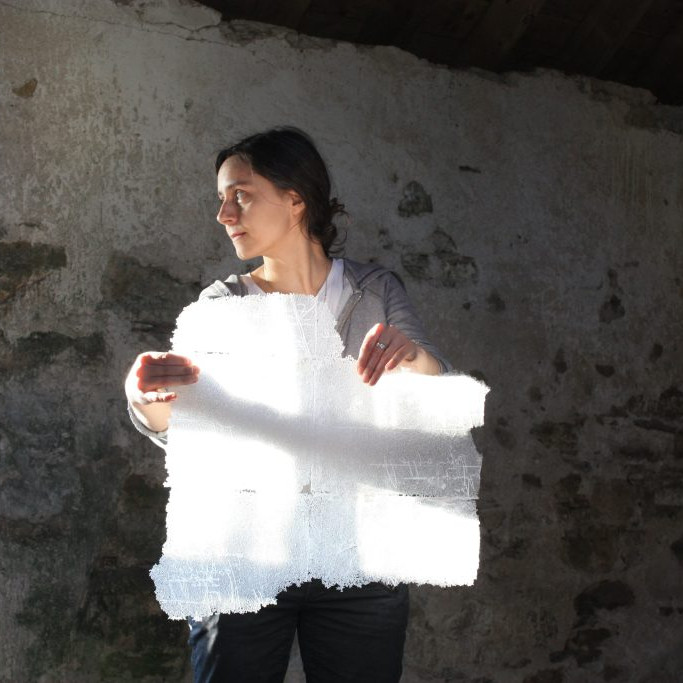Jonathon Westacott Glass Artist
What led you to set up your studio in the hinterland of the Sunshine Coast?
After completing University and traineeship at the Jam Factory Craft and Design Centre, my, partner Marguerite and I moved to the Sunshine Coast to work with Chris Pantano. When Chris retired I built a large studio in Yandina and eventually set up at home at Dulong on the Blackall Range
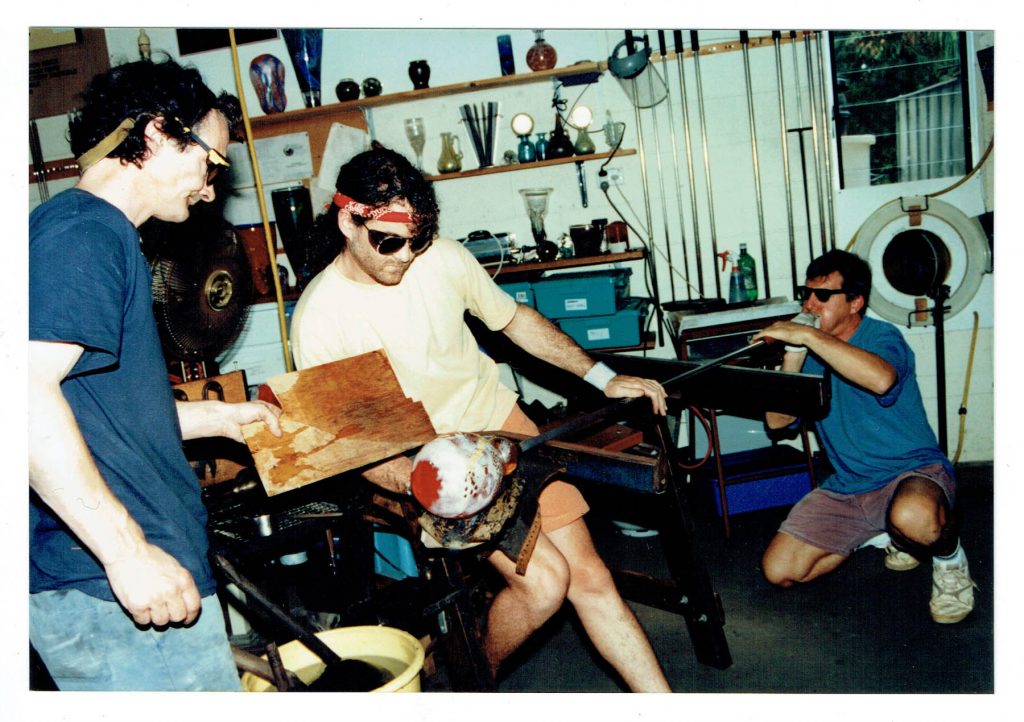
Pantano Studio
Take us briefly through the stages to produce, ‘Bunya, Glass House Mountains’.
There are two main parts in the creation of my work. I start by visiting wilderness areas, drawing and photographing many aspects of the place. I have developed techniques which enable me to use my drawings as a stencil so I can carve these images into the glass.
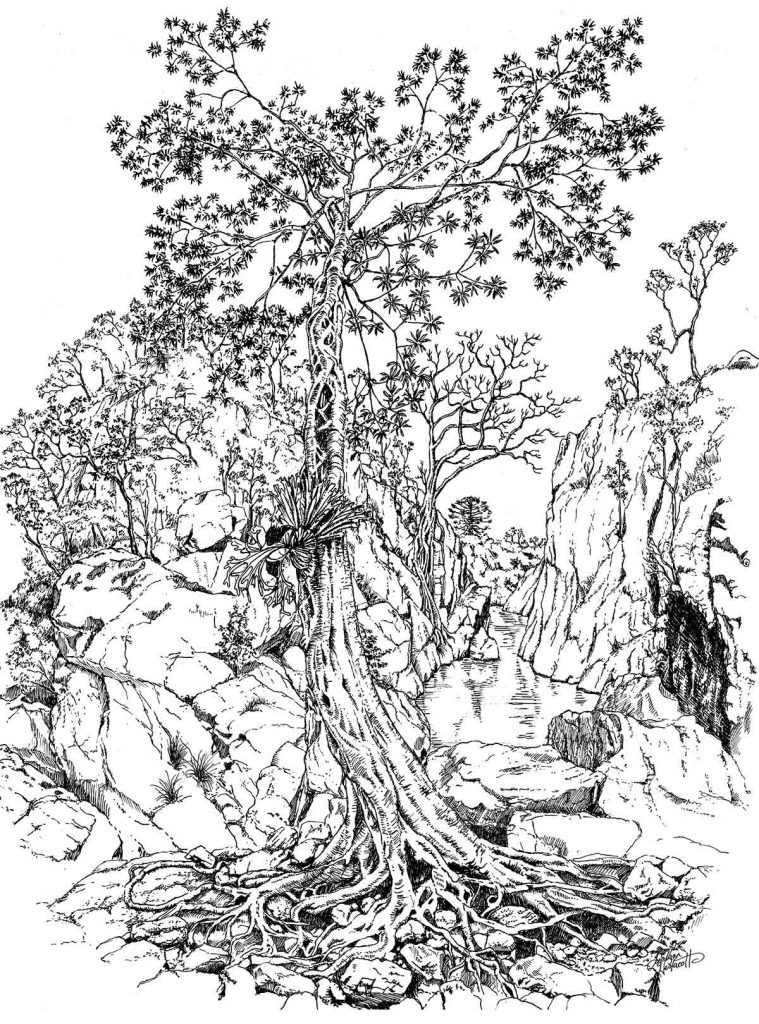
Kureelpa Gorge 2
The second part is blowing the forms to carry the design. This involves layering different glass colours in the blowing process and when the glass cools carving back through these layers to reveal the image.
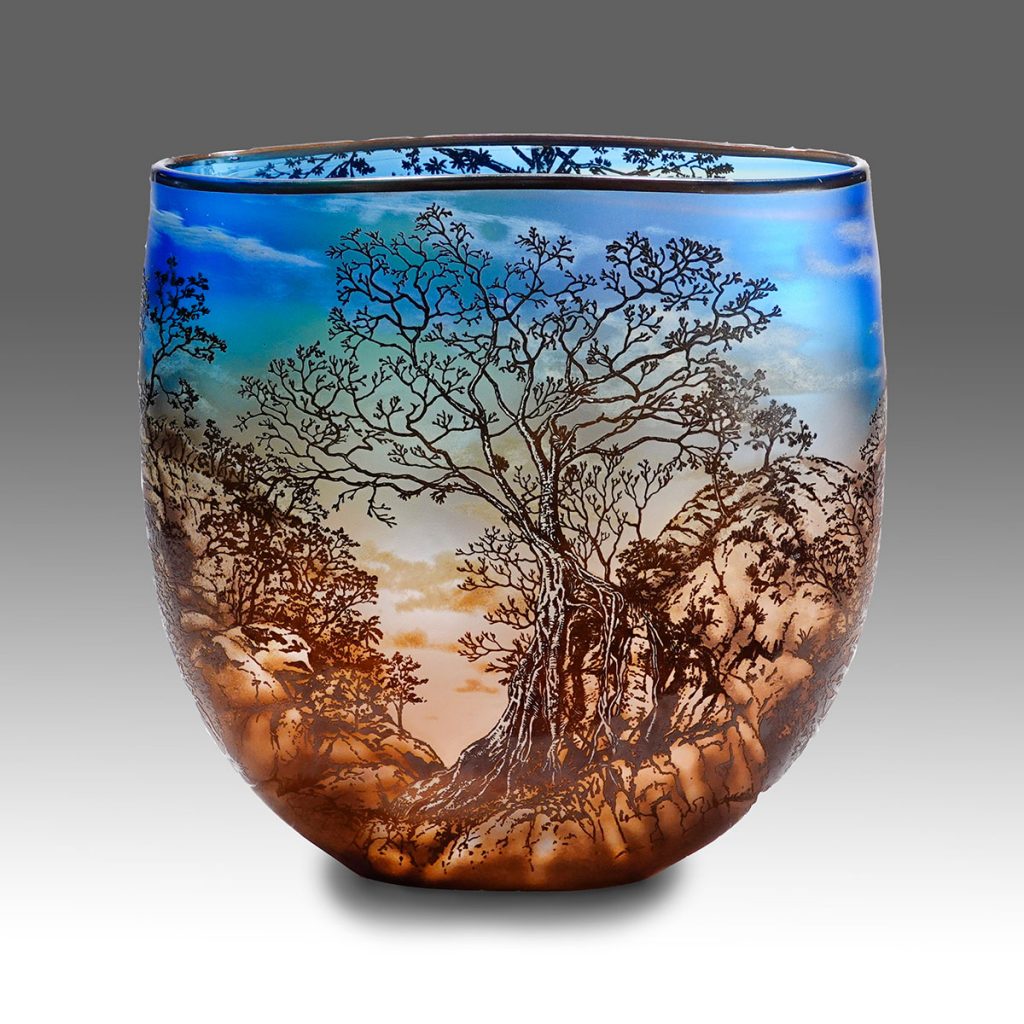
Kureelpa Gorge 2
Explain the relationship to place in this work.
The Glasshouse Mountains are phenomenal geological formations of the Sunshine coast and have fascinated me from the moment I saw them. The direct reference to glass factories in England when Captain Cook first laid eyes on them and more importantly the Indigenous stories about creation and place. Bunya trees are hugely
important to the First Nations people and an iconic feature of the area.
Show us a few of your varied landscapes captured in you glass.
Noosa, Queensland
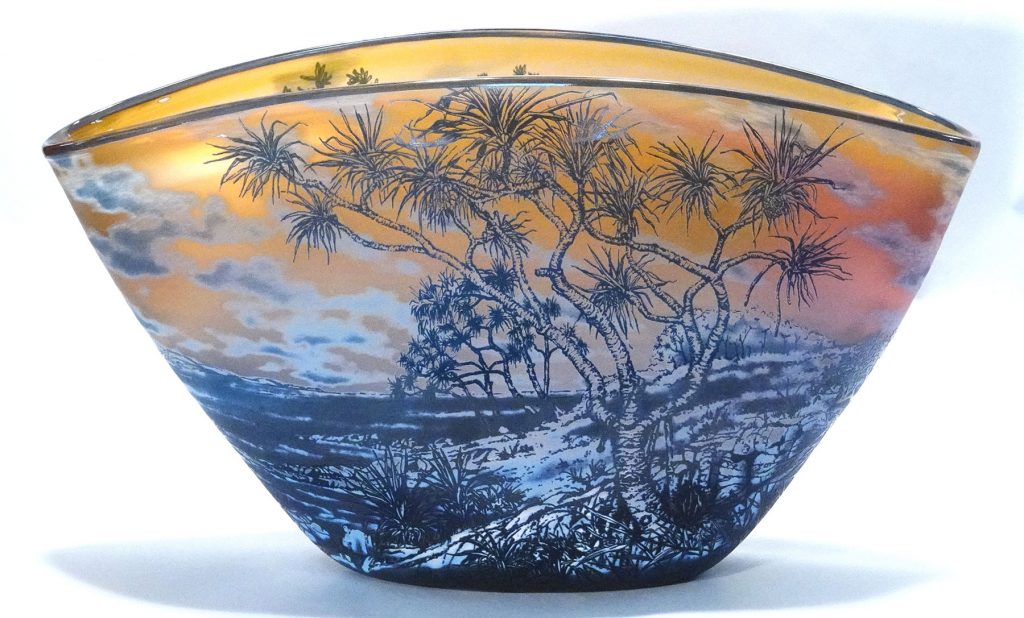
Noosa
Kakadu, Baark Marlam
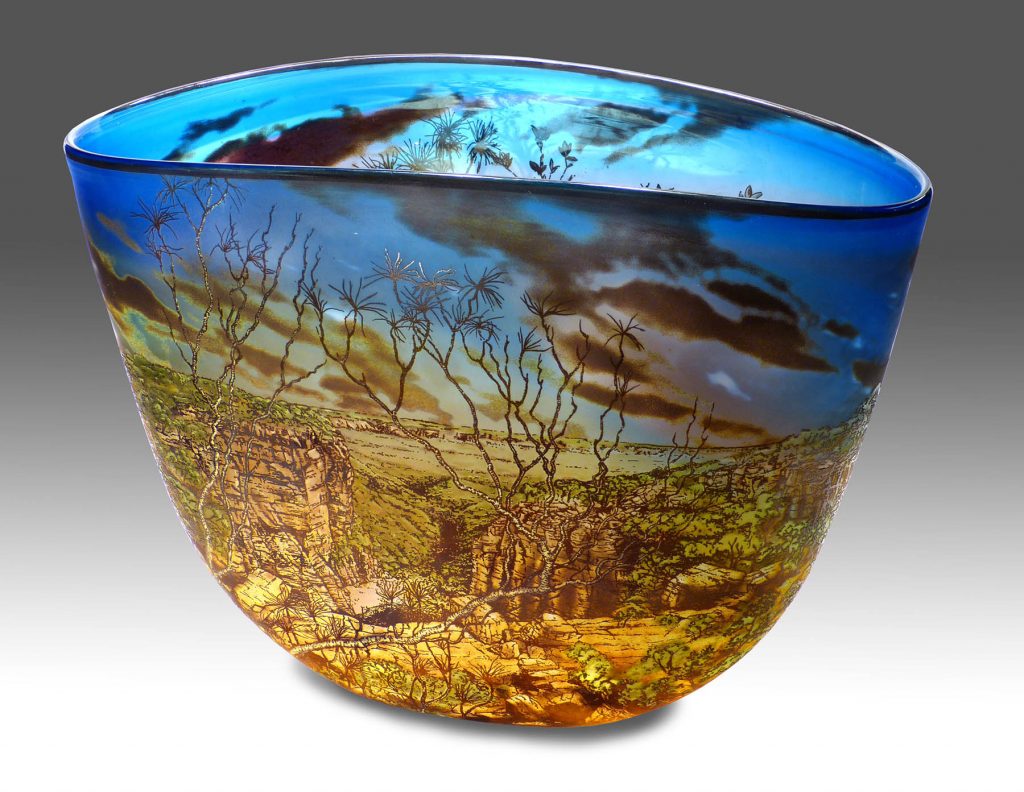
Kakadu, Baark Marlam
Kureelpa Gorge
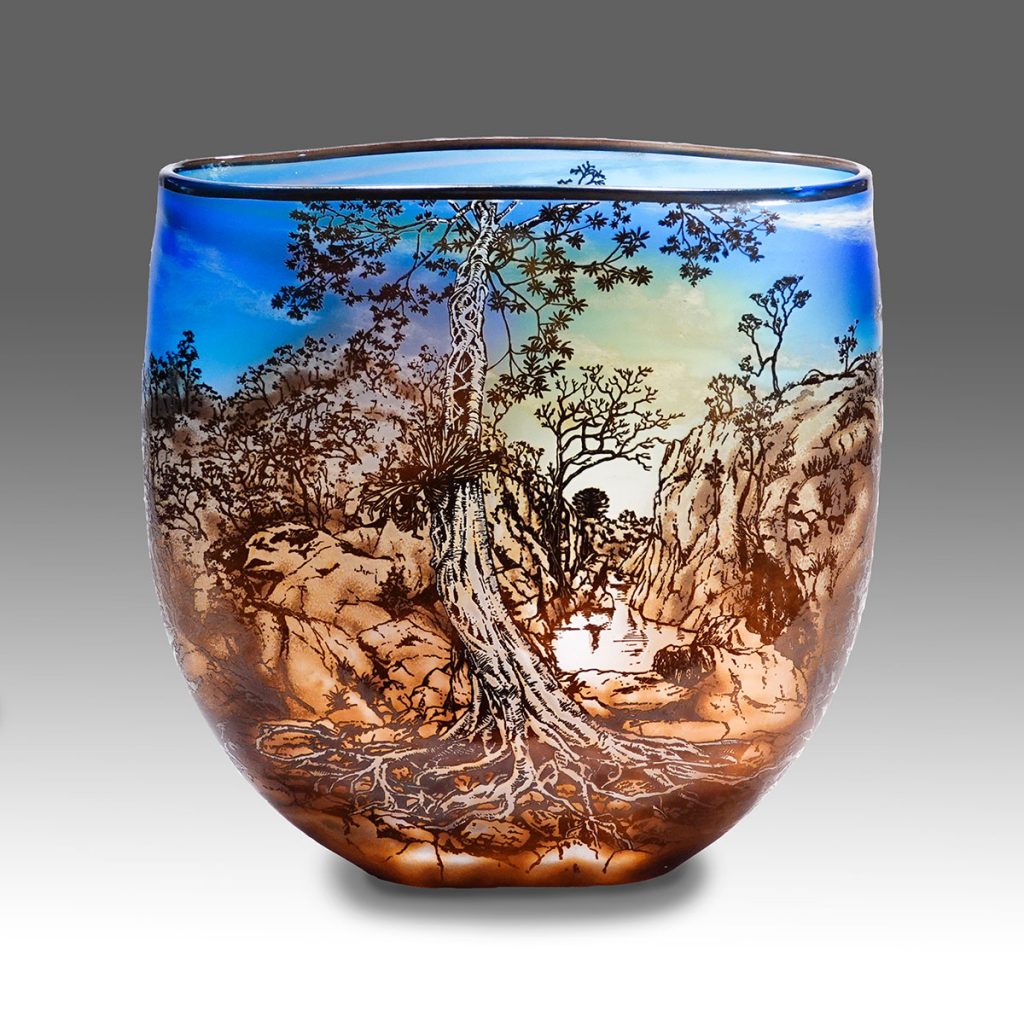
Kureelpa Gorge
Comment on your use of a specific tree in your Kurrajong Series.
I first became fascinated by Kurrajong trees when I saw them in the country around Coonabarabran.
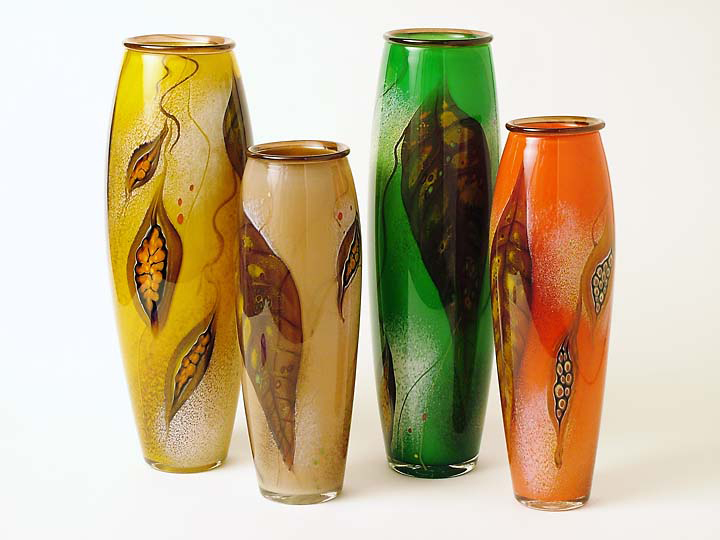
Kurrajong
I immediately related to paintings done by Fred Williams and his depiction of the landscape in the Pilbara. I love many things about these trees and again the importance to Aboriginal people. The bark was used to make cordage for nets and fishing line as well as seeds which were ground to flour also edible roots.
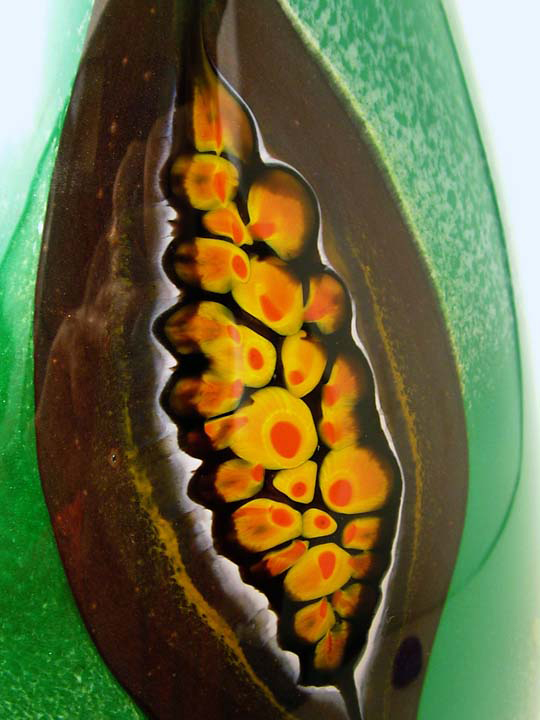
Kurrajong pod
Not everyone can say they have blown glass in front of Elizabeth 11, how did this come about?
When the new Jam factory was built in the centre of Adelaide I helped set up the glass studio and was part of the team chosen to be working on the day Queen Elizabeth opened the centre.
You make the comment, “I am fascinated by man’s interaction in the landscape”. Expand on this comment and relate it to two of your pieces.
As Humans we have a desire to be valued and contribute to society and culture in some way. For, me the landscape has been a constant source of wonder and inspiration. I am driven to capture its beauty in a time when there is a very real threat of species disappearing through the environment changing irreversibly. My work is a
conscious record and hopefully has its place somewhere in history.
Show us how you have incorporated murini and millefiori techniques in your work.
I use murrine and Millefiore as details in many of my works. The seed pods in the Kurrajong series, eyes of Bee eaters and kingfishers.
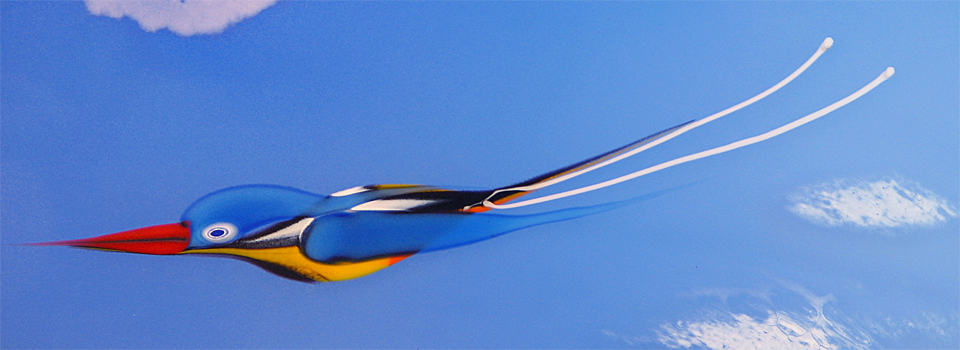 Kingfisher
Kingfisher
Nymphae Platters are some examples.

Nymphae Platters – detail
Discuss the way glass is reliant on optical interpretation.
What I love about glass is the way colour is revealed in its purest form. Light that is reflected or transmitted through glass can make the colour look completely different.
Your current work is, ‘Etched Series’.
How many colours to you have in a single piece? I can use between 1 and 20 different colours in the etched series as well as an infinite variety of tones depending on how thickly I apply these.

Bunya Glasshouse
Do you produce your own base piece?
I blow all my own work.
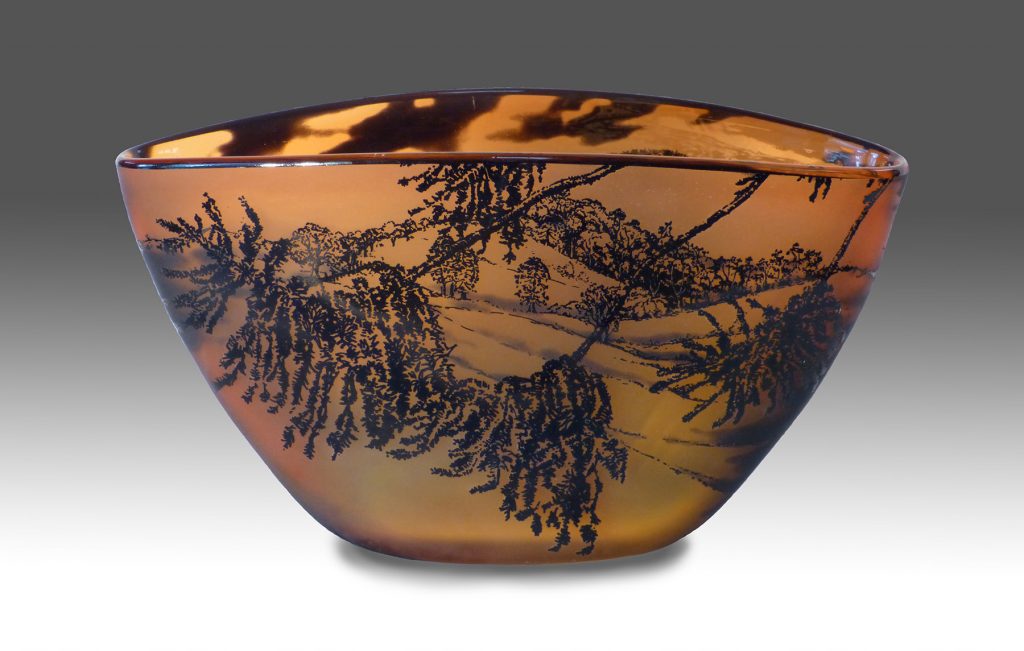 Bunya Glasshouse – reverse side
Bunya Glasshouse – reverse side
Comment on the shapes you are using in this series, and why?
I shape the forms to suit the way my drawings fit on the piece. Prefering to flatten the vessels so I have a canvas to work from but also like to wrap these images around cylinder and barrel forms to resemble a frieze.
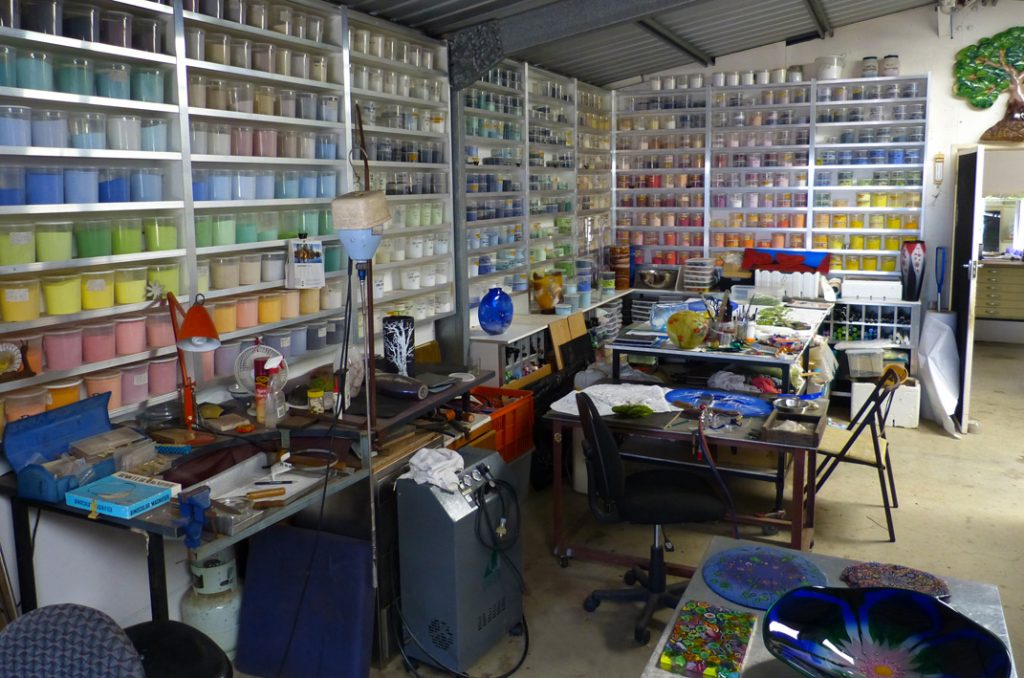 Westacott Studio
Westacott Studio
You have work in many places. Where have pieces gone?
I have sold my glass to collectors and businesses around the world including the UK and America.
Why have these purchases been so valuable to you personally?
It is good to know my work has a place in different cultures. For me, crossing these boundaries the work is successful and desirable.
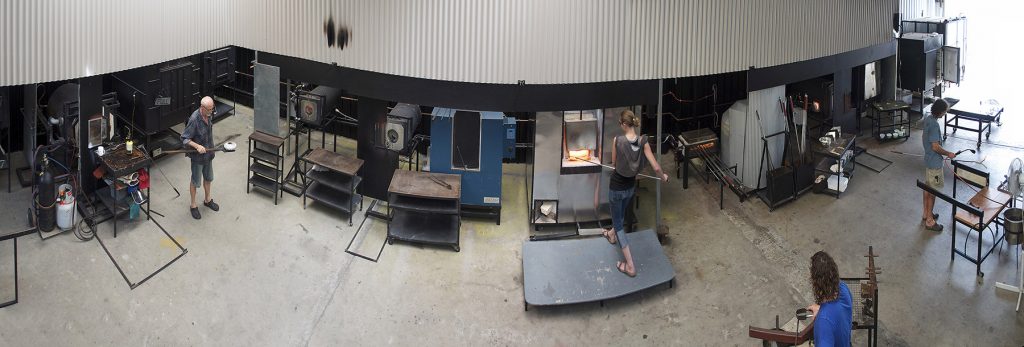
Westacott Studio
Discuss the weight of your glass and its relationship to balance and the stability of the piece.
Glass is a very dense and hard material and yet fragile so I like to make forms which are balanced and stable. Simple shapes to carry complex designs.
How large and small is you work? What are your restrictions?
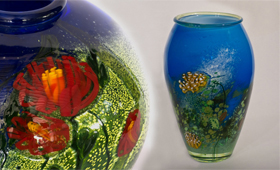
Waratah
Pieces range from 10cm up to about 100cms and weighing 15kgs.
Contact:
Jonathon Westacott
Dulong, Sunshine Coast, Queensland
Interview by Deborah Blakeley, October 2020
Blakeley, Melbourne, Australia
Think a colleague or friend could benefit from this interview?
Knowledge is one of the biggest assets in any business. So why not forward this on to your friends and colleagues so they too can start taking advantage of the insightful information the artist has given?
Other artists you may be interested in:



